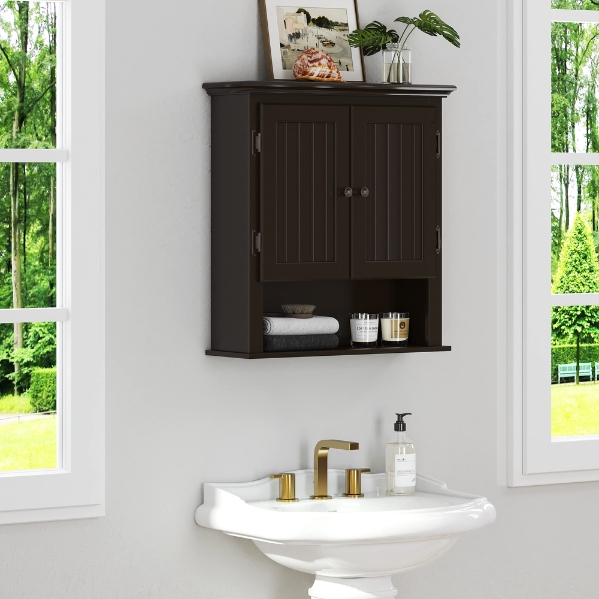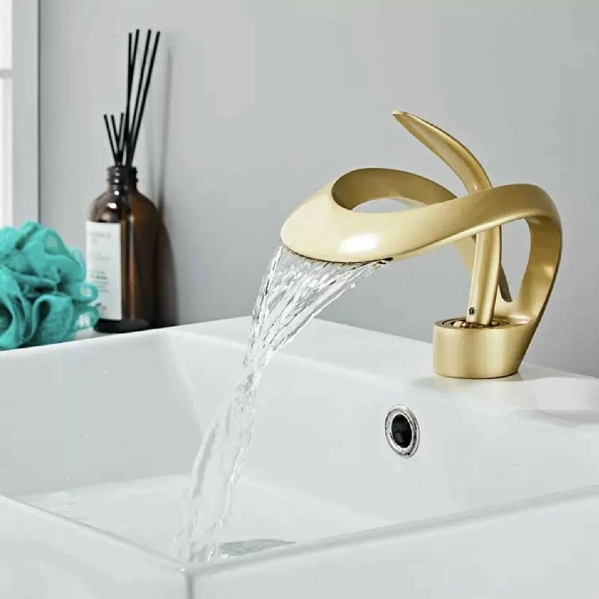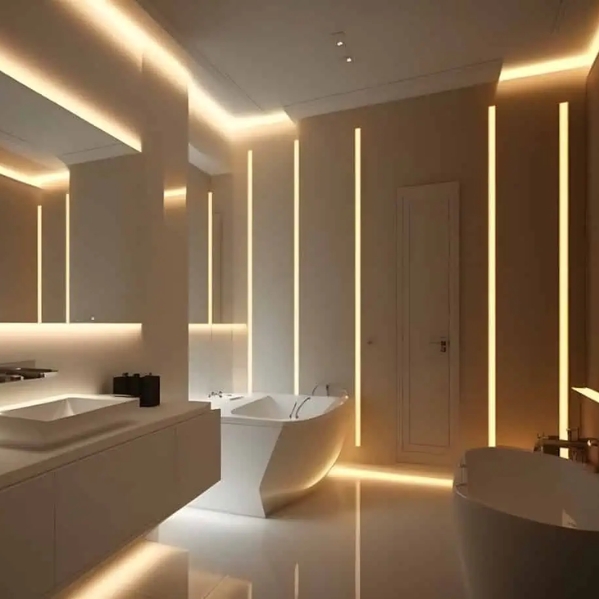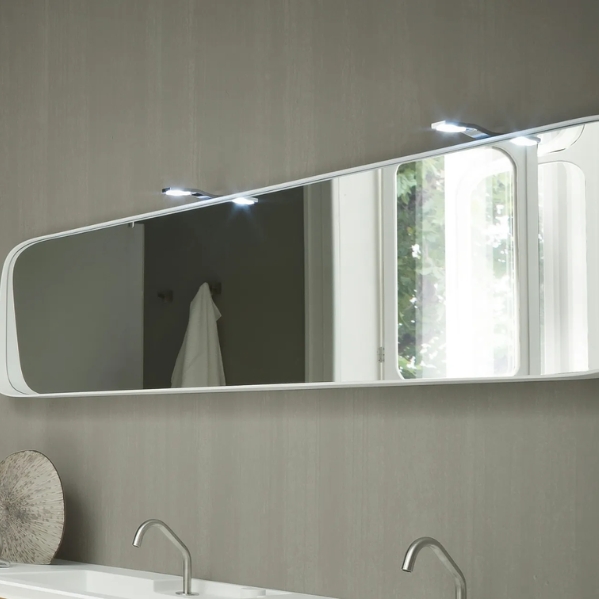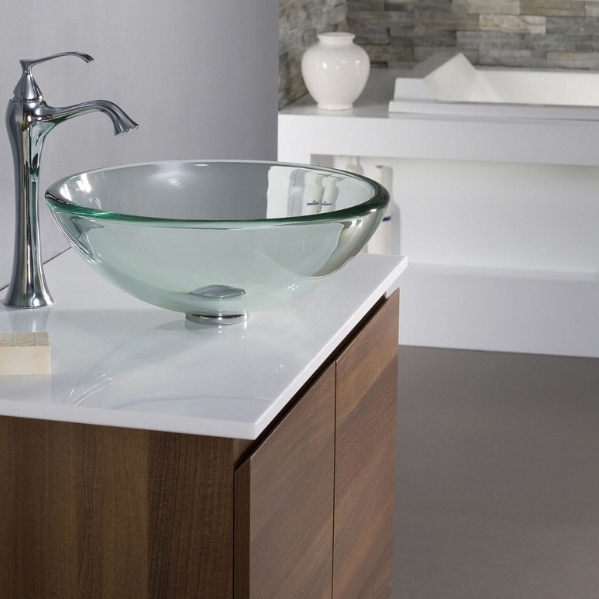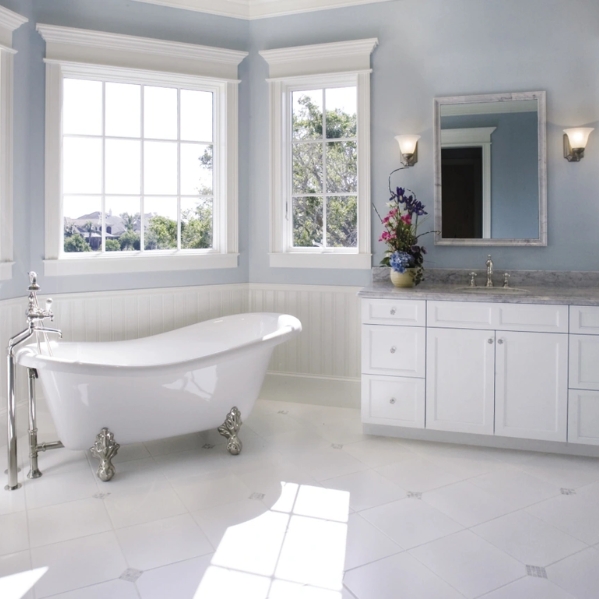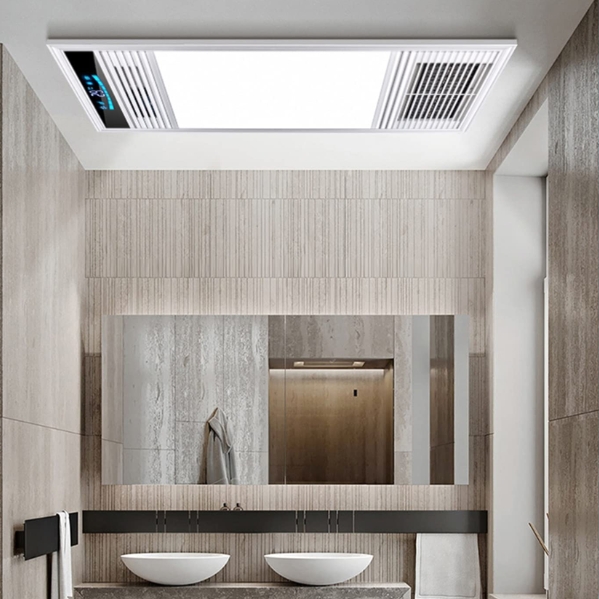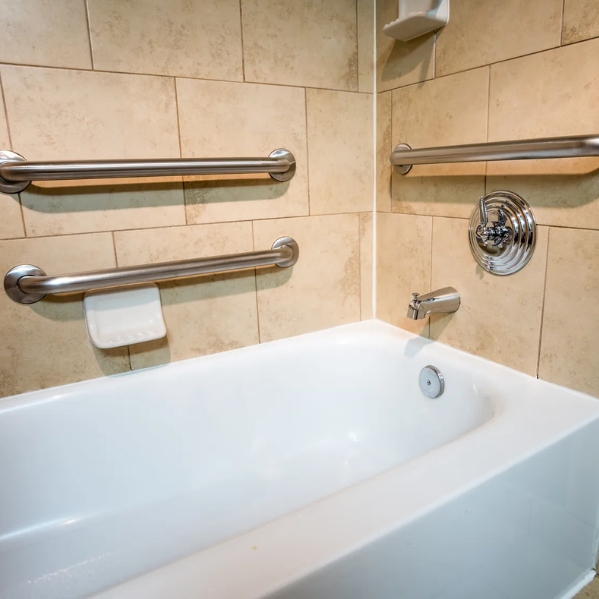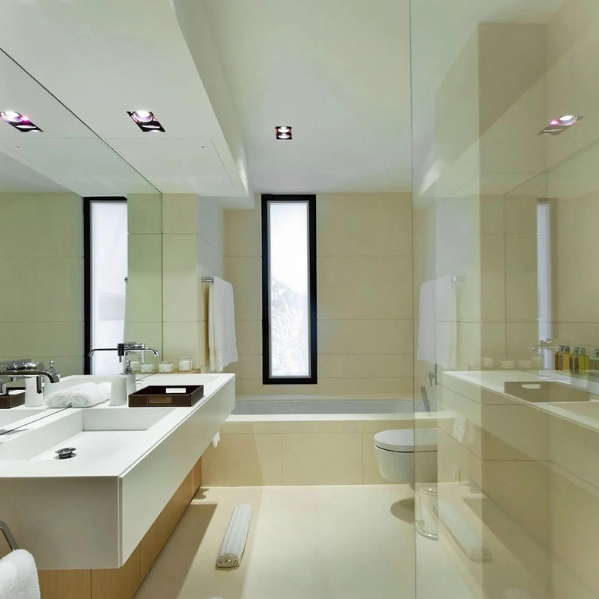Transform Your Bathroom Into a Personal Sanctuary
Creating the perfect bathroom requires careful consideration of both functionality and aesthetics. Whether you’re renovating an existing space or designing from scratch, understanding the essential components will help you make informed decisions that enhance your daily routine while adding value to your home.
Essential Bathroom Accessories for Daily Comfort
The right accessories can make or break your bathroom experience. Towel bars positioned at convenient heights ensure easy access after showers, while toilet paper holders should be installed within comfortable reach. Soap dispensers mounted near sinks promote hygiene and reduce clutter on countertops.
Consider adding hooks behind doors or on walls for robes and clothing. A sturdy grab bar near the shower or tub provides safety for all users, regardless of age or mobility. Magazine racks or small shelves near the toilet offer convenience without compromising the clean aesthetic you’re trying to achieve.
Temperature control becomes crucial with heated towel racks, which serve dual purposes by keeping towels warm and dry while adding a touch of luxury to your space. These accessories work particularly well in master bathrooms where comfort takes priority.
Bathroom Cabinets: Maximizing Storage and Style
Smart cabinet selection balances storage needs with visual appeal. Wall-mounted cabinets save floor space and create an airy feeling, making smaller bathrooms appear larger. Floor-standing cabinets offer maximum storage capacity and can anchor your design with substantial presence.
Medicine cabinets built into walls provide concealed storage for toiletries and medications while maintaining clean lines. Consider models with interior lighting to improve visibility during morning routines. Adjustable shelves accommodate bottles and containers of varying heights.
Cabinet materials should withstand humid conditions. Solid wood requires proper sealing, while engineered materials like MDF with moisture-resistant coatings offer durability at lower costs. Hardware selection impacts both function and appearance, choose handles and knobs that complement your overall design theme.
Selecting the Perfect Bathroom Faucet
Faucet selection impacts both water efficiency and design cohesion. Single-handle models offer temperature control with one motion, ideal for busy mornings or when hands are full. Dual-handle faucets provide precise temperature adjustment and often complement traditional design themes.
Wall-mounted faucets create clean countertop lines and make cleaning easier, though installation requires planning during construction or major renovations. Deck-mounted options offer easier retrofitting and a wide range of style choices.
Water pressure and flow rate affect daily satisfaction. Look for faucets with aerators that maintain strong pressure while conserving water. Finishes should coordinate with other fixtures; popular choices include brushed nickel, chrome, bronze, and matte black. Quality construction ensures years of reliable operation and maintains appearance despite daily use.
Bathroom Lighting: Creating the Right Ambiance
Proper lighting serves multiple functions beyond basic visibility. Task lighting around mirrors eliminates shadows for grooming activities, while ambient lighting creates a relaxing atmosphere for baths. Accent lighting highlights architectural features or decorative elements.
Vanity lighting should be positioned to minimize shadows on faces. Side-mounted sconces at eye level provide even illumination, while overhead fixtures work when positioned correctly to avoid casting shadows downward. LED bulbs offer energy efficiency and long life, reducing maintenance needs.
Dimmer switches allow adjustment based on time of day and activity. Bright lighting helps with detailed tasks like applying makeup or shaving, while softer lighting creates a spa-like atmosphere for relaxation. Natural light from windows or skylights reduces reliance on artificial sources during daytime hours.
Moisture-resistant fixtures ensure safety and longevity in humid environments. Look for fixtures rated for bathroom use, particularly in shower areas where direct water contact may occur.
Bathroom Mirrors: Reflection and Space Enhancement
Mirrors serve practical and aesthetic purposes in bathroom design. Large mirrors make small spaces feel more expansive by reflecting light and creating visual depth. Multiple mirrors can serve different functions, such as a large vanity mirror paired with a magnifying mirror for detailed tasks.
Framed mirrors add decorative interest and can tie together color schemes or material choices used elsewhere in the space. Frameless mirrors offer clean, modern aesthetics and work well with contemporary designs. Backlit mirrors provide additional illumination while creating a sophisticated appearance.
Consider mirrors with built-in defoggers for shower areas; these prevent condensation buildup that requires constant wiping. Smart mirrors with integrated lighting, time displays, or even entertainment features represent the latest in bathroom technology.
Placement affects both function and room flow. Mirrors positioned to reflect windows or light sources brighten the space naturally. Height should accommodate all users comfortably, typically centered at eye level for the average household member.
Bathroom Shelves: Organized Storage Solutions
Strategic shelf placement keeps essentials within reach while maintaining an organized appearance. Open shelving displays decorative items and frequently used products, while closed storage conceals less attractive necessities.
Floating shelves create modern looks and make cleaning floors easier. Glass shelves appear lightweight and work well in smaller spaces, while wood shelves add warmth and natural texture. Metal shelves offer durability and work particularly well in industrial or contemporary designs.
Corner shelves utilize often-wasted space effectively, perfect for storing bottles and containers. Over-toilet shelving maximizes vertical space without interfering with daily use. Recessed shelves built into walls during construction provide storage without protruding into the room.
Weight capacity matters when selecting shelves, especially for storing heavy items like towels or large bottles. Proper mounting ensures safety and prevents damage to walls or stored items.
Bathroom Sinks: Form Meets Function
Sink selection impacts both daily usability and design. Undermount sinks create seamless countertop integration and easy cleaning, while vessel sinks make bold design statements and work well with shorter vanities.
Drop-in sinks offer easy installation and replacement, making them a practical choice for renovations. Wall-mounted sinks save floor space and work well in powder rooms or smaller bathrooms. Pedestal sinks provide classic elegance while offering compact footprints.
Size considerations include both bowl depth and overall dimensions. Deeper bowls reduce splashing and accommodate larger items, while wider sinks handle multiple users more effectively. Consider your daily routines when selecting size and configuration.
Material choices affect durability, maintenance, and appearance. Porcelain offers classic appeal and easy cleaning. Natural stone provides unique patterns but requires more maintenance. Composite materials combine durability with design flexibility.
Bathroom Storage: Keeping Everything Organized
Effective storage solutions prevent clutter while keeping essentials accessible. Built-in storage maximizes space efficiency and creates custom solutions for specific needs. Linen closets store towels and supplies, while vanity storage keeps daily items organized.
Drawer organizers maintain order within cabinets and make finding items easier. Pull-out drawers in lower cabinets improve accessibility compared to traditional shelving. Tall, narrow storage fits into tight spaces while providing substantial capacity.
Consider storage for different item types: hanging storage for robes and towels, enclosed storage for toiletries and cleaning supplies, and easy-access storage for daily essentials. Moisture-resistant materials prevent damage in humid conditions.
Multi-functional furniture, like storage ottomans or benches, provides seating while concealing items. Over-door organizers utilize the often-forgotten space behind doors for additional storage capacity.
Bathroom Tiles: Durable Beauty for Walls and Floors
Tile selection affects both aesthetics and maintenance requirements. Porcelain tiles offer excellent water resistance and durability, making them ideal for shower areas and high-traffic floors. Natural stone tiles provide a unique character but may require sealing and more careful maintenance.
Large format tiles create seamless appearances with fewer grout lines, while smaller tiles offer more design flexibility and better slip resistance on floors. Mosaic tiles work well for accent walls or shower niches, adding visual interest through color and texture variation.
Grout selection impacts both appearance and maintenance. Darker grout hides stains better but may make spaces feel smaller. Sealed grout resists moisture and staining, reducing long-term maintenance needs.
Floor tiles should provide adequate slip resistance, especially in wet areas. Textured surfaces or smaller tiles with more grout lines improve traction. Wall tiles can prioritize appearance over slip resistance, allowing for smoother finishes and larger formats.
Bathroom Vanities: The Foundation of Your Design
Vanity selection anchors your bathroom design while providing essential storage and counter space. Single vanities work well in smaller spaces or powder rooms, while double vanities accommodate couples and busy families more effectively.
Floating vanities create contemporary looks and make floor cleaning easier, while traditional vanities with legs or toe kicks offer classic appeal and may provide more storage options. Custom vanities maximize space utilization and allow for specific storage configurations.
Countertop materials affect both appearance and maintenance. Quartz offers durability and consistent patterns with minimal maintenance. Natural stone provides unique beauty but requires more care. Laminate options have improved significantly and offer budget-friendly solutions.
Consider plumbing requirements when selecting vanities, especially if changing from existing configurations. Pre-drilled holes for faucets should match your chosen fixtures, or select vanities that accommodate custom drilling.
Storage configuration within vanities should match your needs. Drawers provide better organization than shelves, while a combination of both offers maximum flexibility. Soft-close hardware reduces noise and prevents damage from slamming.
Color Coordination and Material Harmony
Successful bathroom design depends heavily on creating visual harmony between different elements. When selecting tiles, consider how they complement your chosen vanity finish and cabinet hardware. Neutral color palettes provide timeless appeal and flexibility for future updates, while bold accent colors can be introduced through accessories, towels, and decorative elements that change easily over time.
Texture mixing adds visual interest without overwhelming smaller spaces. Combine smooth surfaces like glass tiles or polished stone with textured elements such as natural wood vanities or woven storage baskets. This approach creates depth and sophistication while maintaining cohesive design themes.
Metal finish consistency throughout faucets, lighting fixtures, cabinet hardware, and accessories creates polished, intentional appearances. Choose between warm metals like brass and gold or cool metals like chrome and brushed nickel, then maintain consistency across all fixtures for professional results.
Ventilation and Moisture Management
Proper ventilation protects your investment in quality materials and fixtures while preventing mold, mildew, and structural damage. Exhaust fans should move air at rates appropriate for bathroom size, typically calculated at 1 CFM per square foot of floor space. Position fans centrally for optimal air circulation, avoiding placement directly over shower areas where steam concentration is highest.
Natural ventilation through windows provides additional moisture control while introducing natural light. However, privacy considerations and climate factors influence window placement and sizing decisions. Frosted or textured glass maintains privacy while maximizing light transmission.
Moisture-resistant materials throughout the bathroom reduce maintenance requirements and extend component lifespans. Choose grout with antimicrobial properties, seal natural stone surfaces regularly, and ensure proper waterproofing behind tile installations, particularly in shower areas.
Safety and Accessibility Features
Modern bathroom design increasingly incorporates universal design principles that accommodate users of all ages and abilities. Grab bars installed near toilets, showers, and bathtubs provide essential safety support, particularly important for aging-in-place considerations. Choose grab bars that complement your design aesthetic rather than appearing purely utilitarian.
Non-slip surfaces prevent accidents in wet conditions. Select floor tiles with appropriate slip resistance ratings, consider textured surfaces in shower areas, and use bath mats with secure backing to prevent sliding.
Adequate lighting prevents accidents while supporting daily grooming tasks. Eliminate shadows around mirrors and ensure sufficient illumination for safe navigation, particularly important for nighttime use. Motion-activated lighting provides convenience while reducing energy consumption.
Accessible storage keeps frequently used items within easy reach without requiring stretching or bending. Position everyday essentials between 15 and 48 inches from floor level, and consider pull-out drawers instead of deep cabinets that require reaching to access items stored in the back.
Energy Efficiency and Sustainability
Sustainable bathroom design reduces environmental impact while lowering long-term operating costs. Water-efficient fixtures, including low-flow faucets, dual-flush toilets, and efficient showerheads, significantly reduce water consumption without sacrificing performance. Look for WaterSense-certified products that meet EPA efficiency standards.
LED lighting consumes substantially less energy than traditional incandescent bulbs while lasting much longer, reducing both energy costs and replacement frequency. LED options now include warm color temperatures that create comfortable, inviting bathroom atmospheres.
Sustainable materials such as bamboo, reclaimed wood, and recycled glass tiles offer environmentally responsible choices without compromising style or durability. These materials often provide unique character and visual interest while supporting sustainable building practices.
Proper insulation around bathroom walls and ceilings improves energy efficiency while preventing condensation problems that can damage building materials. This investment pays dividends through reduced heating and cooling costs while protecting your bathroom investment.
Technology Integration
Modern bathrooms increasingly incorporate technology features that enhance convenience and functionality. Smart mirrors with built-in displays, lighting controls, and even entertainment features transform daily routines while maintaining sleek appearances.
Heated floors provide luxury comfort while helping dry wet surfaces more quickly, particularly beneficial in colder climates. Radiant floor heating systems work well under tile installations and can be controlled through programmable thermostats for energy efficiency.
Bluetooth speakers integrated into ventilation fans or lighting fixtures allow music streaming during relaxing baths or energizing morning routines without requiring separate devices that could be damaged by moisture.
Smart faucets with touchless operation improve hygiene while conserving water through automatic shut-off features. These fixtures work particularly well in family bathrooms where children may forget to turn off faucets completely.
Maintenance Planning
Successful bathroom design considers long-term maintenance requirements to preserve beauty and functionality over time. Easy-to-clean surfaces reduce the daily maintenance burden while maintaining hygienic conditions. Avoid overly textured surfaces that trap dirt and soap residue, particularly around sinks and showers.
Quality sealants and caulking prevent water infiltration that can cause expensive damage over time. Plan for regular re-caulking schedules, typically every 1-2 years, depending on usage and environmental conditions.
Accessible plumbing through removable panels or service doors allows maintenance and repairs without major demolition. This foresight saves significant costs and disruption when plumbing issues arise.
Replacement part availability influences long-term satisfaction with fixture choices. Select products from established manufacturers with reliable parts availability and customer service support for future needs.
Bringing It All Together
Successful bathroom design integrates all these elements into a cohesive space that serves your daily needs while reflecting your style. Consider how each component works with others: how lighting affects mirror function, how storage integrates with vanity design, how tile choices complement fixture finishes.
Planning before purchasing ensures compatibility and prevents costly mistakes. Measure your space carefully and consider traffic flow patterns. Professional consultation can help optimize layouts and ensure proper installation of plumbing and electrical components.
Remember that bathroom renovations represent significant investments in your home’s value and your daily comfort. Quality components may cost more initially but provide better performance and longevity, making them worthwhile investments for spaces used multiple times daily.
Your bathroom should reflect your lifestyle and preferences while incorporating practical solutions for daily routines. Whether you prefer spa-like serenity or efficient functionality, thoughtful selection of accessories, cabinets, faucets, lighting, mirrors, shelves, sinks, storage, tiles, and vanities will create a space you’ll enjoy for years to come.

